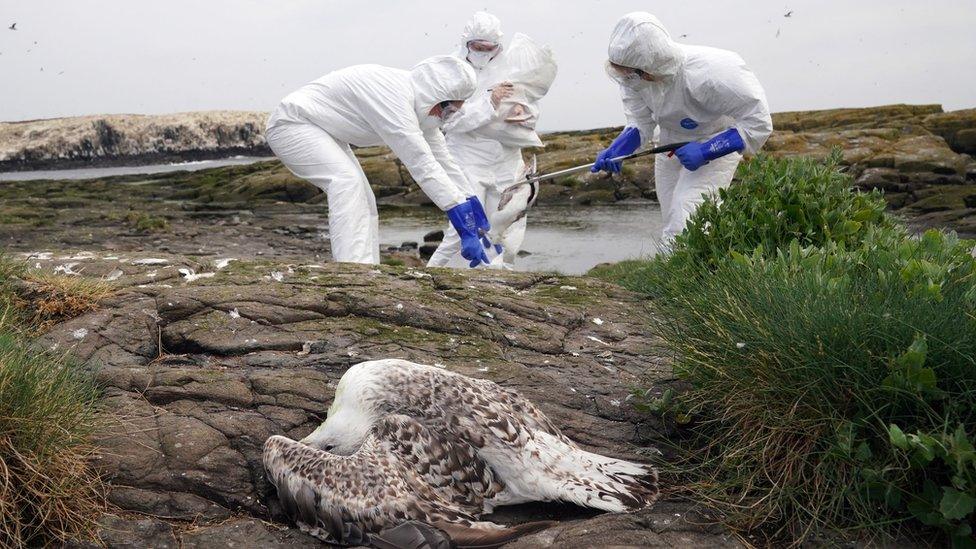Puffins increase on Farne Islands despite bird flu

Puffins are on the red list of Birds of Conservation Concern
- Published
A puffin population has been declared "stable" following fears that bird flu might have had a more devastating effect.
The first full count for five years on the Farne Islands off Northumberland has revealed the endangered species has in fact increased by 15% since 2019.
There are now thought to be 50,000 breeding pairs on the site, which is cared for by the National Trust.
Ranger Sophia Jackson said the birds' self-isolating behaviours meant they had "weathered this particular storm".
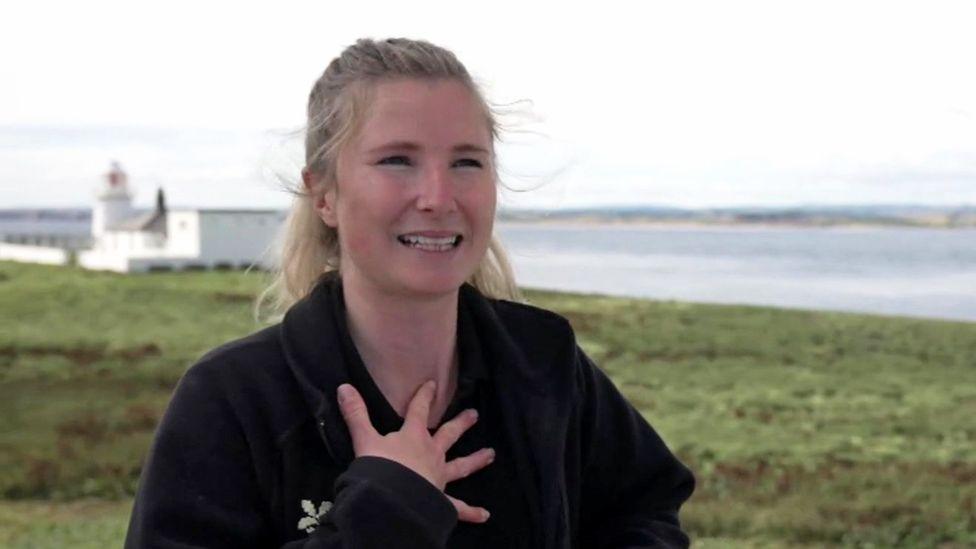
Sophia Jackson said she was extremely happy with the increase in numbers
Ms Jackson said: "Puffins nest in separate burrows and clean them out.
"In that way, the disease is less likely to spread as fast as it does through the other seabirds, which is why we saw a decline in them."
The National Trust said another interesting finding was that fewer pairs have been recorded on the outer islands.
It is thought puffins may have relocated, after stormy weather forced grey seals to move higher up into their territory, causing some burrows to collapse.
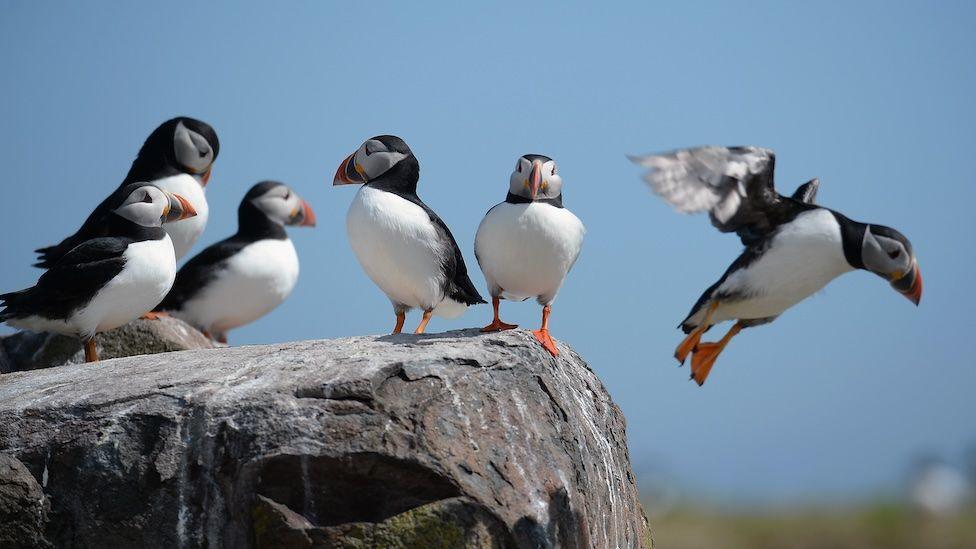
The Farnes, along with neighbouring Coquet Island, are home to the largest puffin colonies in England
All the results will form part of the national Seabird Monitoring Programme and follow six weeks of hard work by the rangers, who were on their hands and knees checking burrows for signs of fresh digging or hatched eggshells.
Earlier this week, five more species of seabird were added to the UK red list of birds at most need of conservation. Puffins were one of five types of bird already on the list.
During the avian flu outbreak in 2022 and 2023, about 10,000 birds on the Farne Islands perished.
More than 900 puffin carcasses were collected but a combination of the Covid pandemic and then bird flu meant conservationists could not get close enough to carry out their full census.
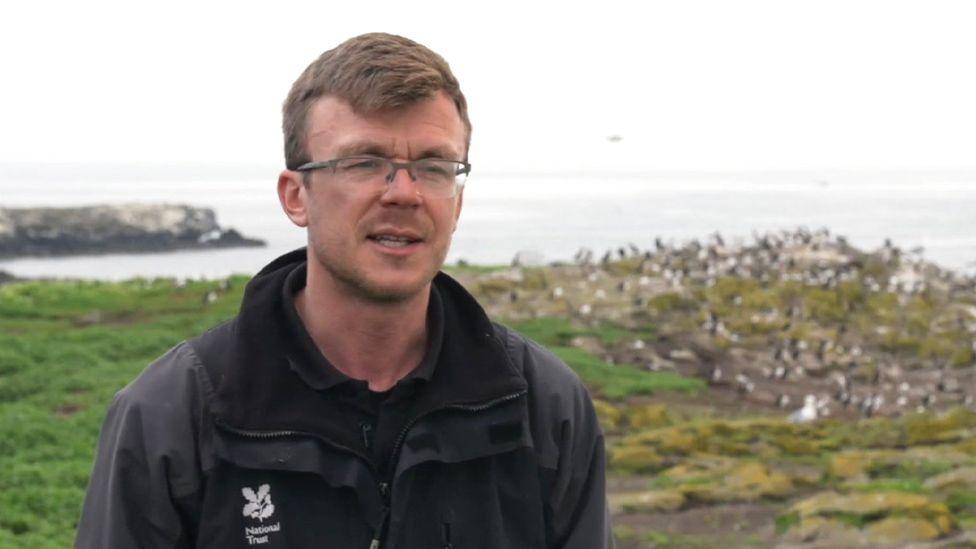
Tom Hendry says "initial figures on other species are concerning"
Ranger Tom Hendry said while puffin numbers are holding up, some cliff nesting birds appear to be struggling.
Initial figures suggest the shag population is down by 75% on the inner islands, but there is some hope.
"To us, it looks like they may have had a productive breeding season," he said.
"So with any luck, next year's count will show that like the puffins, they too have stabilised."
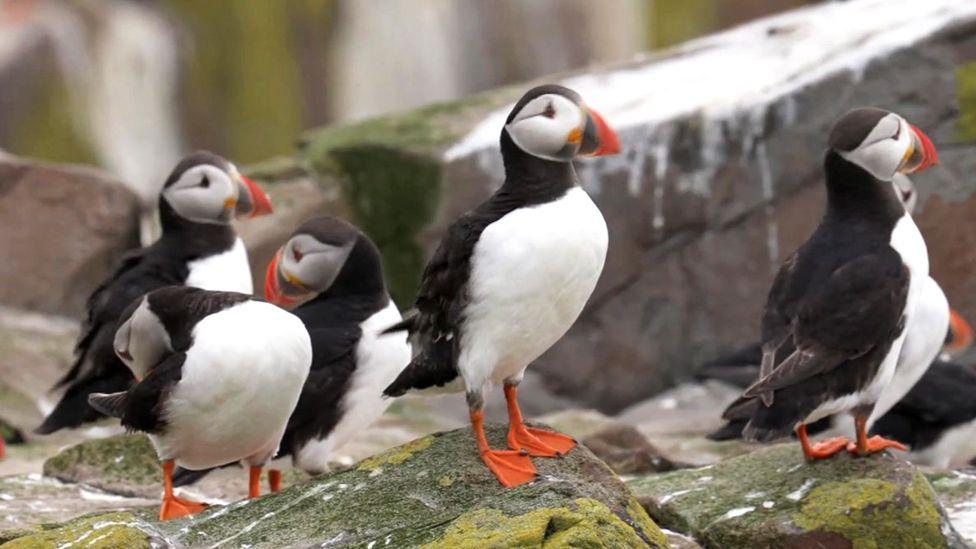
There were fears for the species which only lay one egg a year
Ben McCarthy, head of nature and restoration ecology at the National Trust said long-term monitoring was vital.
"The Farne Islands will be an important bellwether for how they're doing in the face of our changing climate," he said.
Meanwhile, the local rangers said they would make the habitat as welcoming as they can for the puffins next year.
Ms Jackson added: "It's hard work but you're their guardians and you do become attached to them, every single one."
Follow BBC North East on X, external, Facebook, external, Nextdoor and Instagram, external. Send your story ideas to northeastandcumbria@bbc.co.uk.
Related topics
- Published3 September 2024

- Published5 June 2024
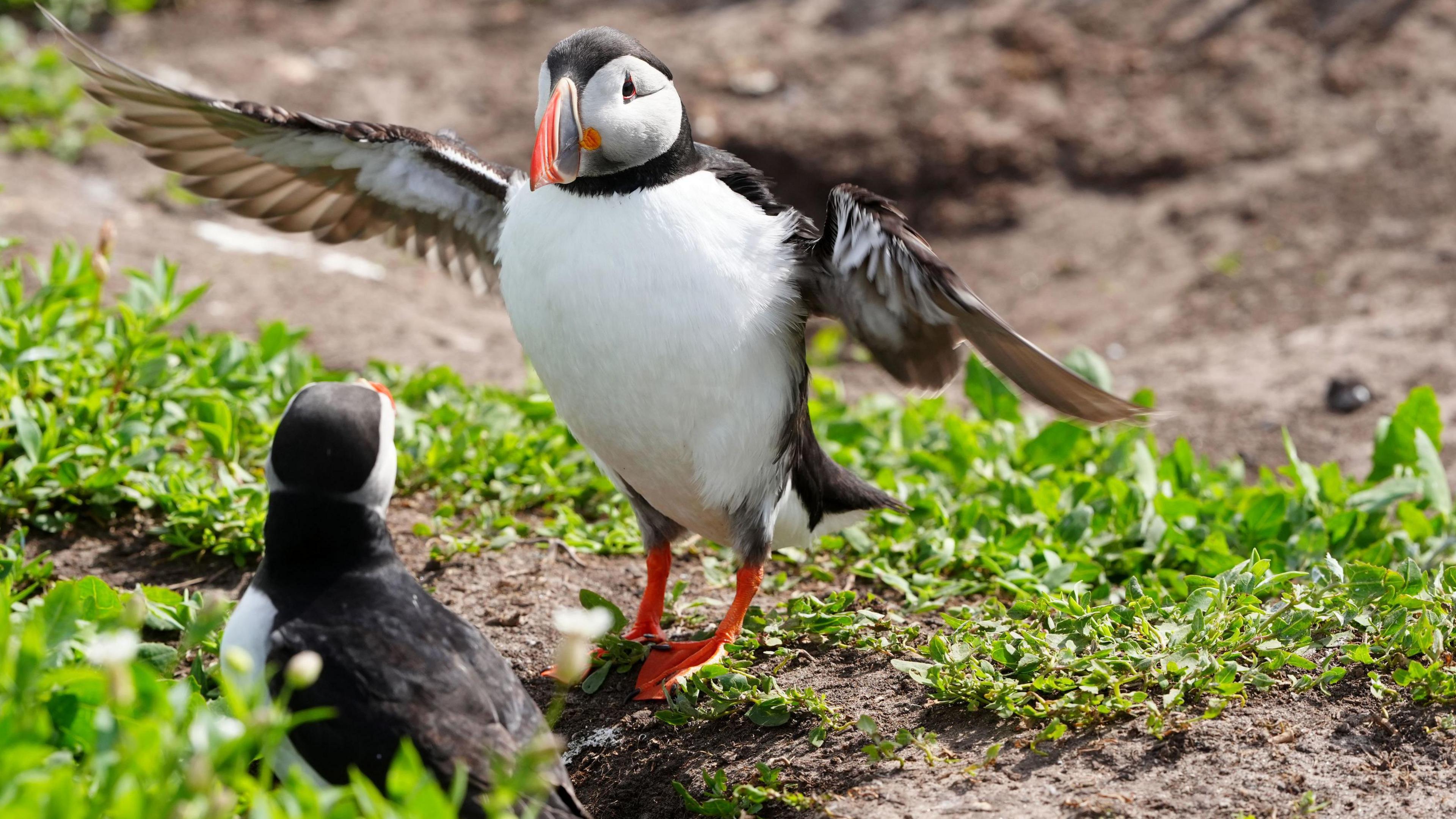
- Published19 February 2024
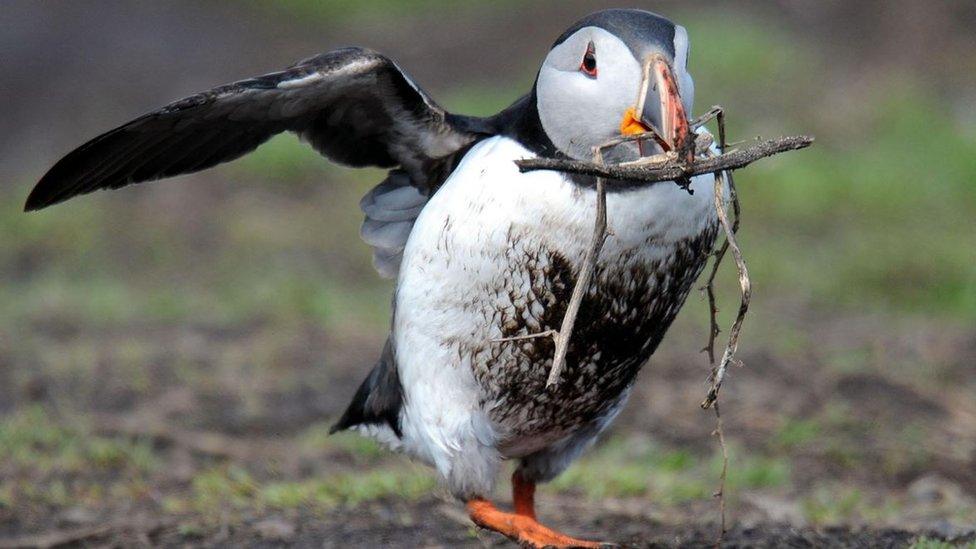
- Published11 September 2023
